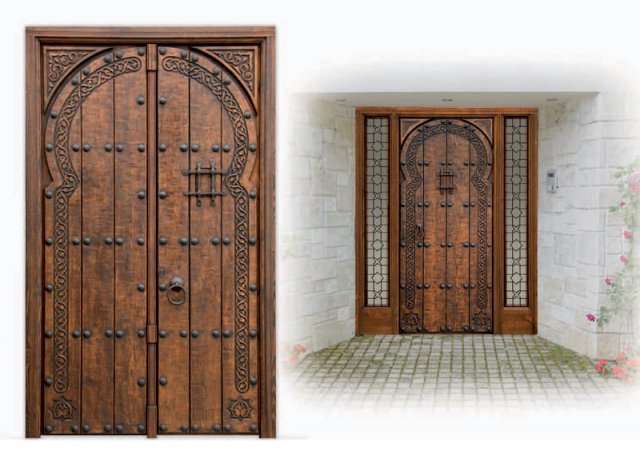Home Improvement
Simple Ways to Perfectly Polish Soapstone
Your kitchen counter is glistening, your fireplace shines with pride, and your bathroom sink gleams under the light. The secret behind these household charms? Soapstone. The age-old question that many homeowners ask, “What can I use to polish soapstone?” is about to be unraveled. Join me on a stone-polishing journey and discover the best techniques, insights, and personal experiences.
Introduction to Soapstone
Soapstone, a metamorphic rock abundant in talc, has graced our households for centuries. Originating from quarries around the globe, its resilient nature combined with an elegant aesthetic has made it a favorite among interior designers and homeowners alike.
Origins and History of Soapstone
Centuries ago, indigenous communities recognized the allure of soapstone. They employed it for cookware, jewelry, and even carvings. Fast forward to modern times, and you’ll find it beautifying our kitchens, bathrooms, and fireplaces.
Common Uses of Soapstone in Homes
While soapstone stoves are a nod to history, the modern era has ushered in soapstone countertops, tiles, and sinks. Thanks to its heat resistance and non-porous nature, it has also found its way into laboratories.
Physical Characteristics of Soapstone
Handling soapstone feels like touching a dry bar of soap, hence the name. However, there’s more beneath the surface that requires our attention.
Texture and Appearance
Soft to the touch, soapstone often boasts a grayish to bluish hue, occasionally sprinkled with veins that add to its character.
Durability and Maintenance Requirements
Though softer than granite, soapstone is impressively durable. That being said, like every gem, it demands care. And that’s where polishing enters the picture.
The Need for Polishing Soapstone
Every piece of art requires maintenance, and soapstone is no different.
Natural Wear and Tear
With time, soapstone tends to lose some of its lustre, often showing light scratches and wear marks.
Enhancing the Aesthetic Appeal
Polishing not only restores its former glory but can also enhance its inherent beauty, making it more reflective and vibrant.
What can I use to polish soapstone?
The age-old question finally gets its answer. From tried-and-tested to contemporary methods, here’s what you can use.
Mineral Oil: A Popular Choice
The go-to for many, mineral oil is easy to apply and offers an immediate enhancement to the stone’s color.
Beeswax and Walnut Oil Mix: A Natural Touch
A concoction that I personally swear by, this mix not only polishes but also protects the stone, offering a slightly matte finish.
Commercial Soapstone Sealers: For the Professional Finish
For those looking for a showroom finish, several commercial sealers promise to give your soapstone that extra shine.
Benefits of Regular Polishing
Regularly caring for your soapstone has its perks.
Preserving the Natural Beauty
Just like moisturizing keeps the skin youthful, regular polishing keeps soapstone vibrant.
Extending the Lifespan of the Soapstone
An ounce of prevention is worth a pound of cure. Regular polishing can save you from costly repairs in the long run.
FAQs on Soapstone Polishing
Why does soapstone need regular polishing? Soapstone, due to its soft nature, can develop minor scratches and lose its shine over time. Regular polishing maintains its beauty and prevents undue wear.
Can I use olive oil to polish my soapstone? While olive oil can give a temporary shine, it can become rancid over time and is not recommended for long-term care.
How often should I polish my soapstone countertop? This largely depends on usage and personal preference. While some prefer a monthly polish, others opt for a quarterly routine.
Is it safe to use commercial soapstone sealers? Yes, most commercial sealers are designed specifically for soapstone and are safe. However, always read the label and follow the manufacturer’s instructions.
Will sanding damage my soapstone? If done correctly, sanding can enhance the finish. Dry sanding offers a matte look, while wet sanding provides a glossy finish.
Do I need to seal my soapstone after polishing? Soapstone is non-porous, so sealing isn’t necessary. Polishing is primarily for aesthetic purposes.
Conclusion and Final Thoughts
Soapstone, with its rich history and elegant charm, is a worthy addition to any home. While its maintenance might seem daunting initially, understanding what you can use to polish soapstone makes the process a breeze. By regularly polishing and caring for your soapstone, you’re not just preserving a piece of stone; you’re cherishing a piece of history.
Home Improvement
Openhouseperth.net Insurance: A Comprehensive Guide for Home

Navigating the maze of insurance options can be a daunting task, especially if you’re new to the world of coverage and policies. Fortunately, Openhouseperth.net Insurance offers a comprehensive range of insurance products tailored to meet your various needs. In this guide, we’ll break down everything you need to know about Openhouseperth.net Insurance, from the types of insurance they offer to how you can request a quote and get in touch for more details.
Which Insurance Kinds Does Openhouseperth.net Provide?
Openhouseperth.net offers a variety of insurance options designed to protect multiple aspects of your life and property. Here are the primary types of insurance available:
- Home Insurance: Provides coverage for your dwelling and personal property against risks like theft, fire, and natural disasters.
- Contents Insurance: Covers personal belongings inside your home, such as furniture, electronics, and clothing.
- Landlord Insurance: Designed for property owners who rent out their homes, covering the building, its contents, and potential rental income loss.
- Strata Insurance is essential the following for owners of units or apartments. It covers shared areas, common property, and occasionally personal items within the unit.
By offering these diverse insurance products, Openhouseperth.net ensures that you can find the right coverage tailored to your specific needs.
What is the Process for Using Openhouseperth.net’s Building Insurance?
Purchasing and using building insurance with Openhouseperth.net is straightforward:
- Get a Quote: Visit their website or contact their customer service team to request a quote tailored to your property’s specifics.
- Review and Customize: You’ll receive a detailed breakdown of the coverage offered. Then, customize the plan according to your needs and budget.
- Purchase: Once satisfied, you can proceed with purchasing the policy. Payment options are flexible, allowing you to choose the most convenient method.
- File a Claim: Filing a claim is simple in the event of an incident. Contact Openhouseperth.net by email or phone, provide the necessary documentation, and their team will guide you through the process.
What is Covered by Contents Insurance?
Contents insurance by Openhouseperth.net offers extensive coverage for your personal belongings within your home. This includes:
- Electronics and Gadgets: Laptops, smartphones, televisions, and other electronic devices.
- Furniture: Sofas, beds, dining tables, and other furnishings.
- Clothing and Accessories: Wardrobe items, jewelry, and watches.
- Appliances: Kitchen appliances, washing machines, and more.
It also provides additional coverage for items lost or damaged during specific events such as burglary, fire, or natural disasters.
Does Openhouseperth.net Insurance Provide Benefits for Landlords?
Yes, Openhouseperth.net offers a robust landlord insurance policy, including:
- Building Protection: Coverage for structural damage to the property.
- Contents Coverage: Protection for items within the rental property owned by the landlord.
- Rental Income Protection: Compensation for lost rental income due to tenant default or property damage.
- Legal Liability: Coverage for legal expenses arising from disputes with tenants.
Why is Strata Insurance Necessary, and What Does it Entail?
Strata insurance is crucial for owners of units or apartments within a shared building. This type of insurance provides coverage for:
- Common Property: Shared areas like hallways, elevators, and lobbies.
- Building Structure: The overall structure of the building.
- Owner’s Fixtures and Fittings: Items like carpets and blinds within the units.
Strata insurance ensures that all unit owners share the responsibility of protecting the building and its common areas, offering a safety net against potential financial burdens.
How Can I Contact Openhouseperth.net to Request a Quote?
Requesting a quote from Openhouseperth.net is easy. You can:
- Visit Their Website: Navigate to the ‘Get a Quote’ section and fill out the online form.
- Email: Reach out to their customer service team via email for personalized assistance.
- Phone: Call their dedicated customer support line to speak directly with an agent.
Does Openhouseperth.net offer any Insurance Reductions?
Openhouseperth.net often provides discounts and offers to help you save money on your insurance premiums. These can include:
- Multi-Policy Discounts: Save money by bundling multiple policies, such as home and contents insurance.
- No-Claim Bonuses: Lower premiums for policyholders who haven’t filed any claims over a certain period.
- Early Bird Discounts: Reduced rates for those who sign up for a policy well in advance.
What Distinguishes Openhouseperth.net from Other Insurance Companies?
Openhouseperth.net sets itself apart from other insurance providers through the following:
- Tailored Insurance Solutions: Customizable policies designed to meet individual needs.
- Exceptional Customer Service: A dedicated team is available to assist with claims, queries, and more.
- Competitive Pricing: Affordable rates without compromising on coverage.
- User-Friendly Platform: An intuitive website that makes it easy to get quotes, manage policies, and file claims.
Does a License govern Openhouseperth.net?
Yes, Openhouseperth.net is a licensed and regulated insurance provider that adheres to industry standards and regulations. This governance guarantees that you receive reliable and trustworthy services.
How Can I Get in Touch with Openhouseperth.net to Find Out More Details?
To learn more about Openhouseperth.net and the insurance products they offer:
- Visit their Website: Explore detailed information about various insurance products and services.
- Email: Contact their customer support team with any specific questions or concerns.
- Phone: Speak directly with an expert to get personalized advice and information.
FAQs
Q: What types of insurance does Openhouseperth.net offer?
A: Openhouseperth.net provides home insurance, contents insurance, landlord insurance, and strata insurance.
Q: How do I file a claim with Openhouseperth.net?
A: You can file a claim by contacting them through their website, email, or phone. They will guide you through the necessary steps.
Q: Are there discounts available for purchasing multiple policies?
A: Yes, Openhouseperth.net offers multi-policy discounts, no-claim bonuses, and early bird discounts.
Q: How can I request a quote from Openhouseperth.net?
A: Visit their website to fill out an online form, email their support team, or call their customer service line.
Q: Is Openhouseperth.net a licensed insurance provider?
A: Yes, Openhouseperth.net is licensed and regulated to ensure they meet industry standards and offer trustworthy services.
Conclusion
Openhouseperth.net Insurance offers a wide range of insurance products to meet various needs, from home and contents insurance to specialized coverage for landlords and strata properties. With exceptional customer service, competitive pricing, and customizable policies, they are a reliable choice for anyone looking to secure their assets and future. For more information or to request a quote, visit their website or contact their support team today.
Home Improvement
Common Pest Problems Faced By Long Beach Homeowners

Long Beach, with its picturesque coastline, diverse neighborhoods, and mild climate, is a sought-after destination for homeowners. However, alongside its many attractions, Long Beach also grapples with a variety of pest infestations that can disrupt daily life and damage property. From tiny ants to elusive rodents, these pests pose challenges to homeowners seeking to maintain a pest-free environment. In this article, we’ll delve deeper into some of the most common pest problems faced by Long Beach homeowners and explore effective strategies for prevention and control.
Ant Infestations
Many types of ants make their presence known all year long, making ant infestations a persistent problem for Long Beach homeowners. Among the most frequent intruders, Argentine ants, smelly house ants, and pavement ants look for food and water sources inside of homes. These persistent pests can quickly establish colonies in kitchens, bathrooms, and other areas, leading to frustration and inconvenience for homeowners. To combat ant infestations, homeowners must maintain a clean living environment, promptly address any food spills or crumbs, and seal entry points where ants can gain access to the home.
Termite Damage
The mild weather in Long Beach makes it perfect for termites to flourish, which puts homeowners’ investments at serious risk. These stealthy destroyers may seriously harm timber buildings, including beams, flooring, and furniture, and frequently do so before homeowners realize how bad the infestation has gotten until it’s too late. To prevent expensive damage to properties from termites and to identify termite activity early on, licensed pest control long beach technicians must conduct routine inspections.
Cockroach Infestations
Cockroach infestations are a common problem in densely populated urban areas of Long Beach, where these resilient pests find ample sources of food, water, and shelter. Cockroaches can transmit diseases, trigger allergies, and contaminate food and surfaces, posing significant health risks to homeowners and their families. To prevent cockroach infestations, homeowners should maintain strict cleanliness standards, eliminate sources of moisture, and seal cracks and crevices where roaches can enter the home, thus minimizing the risk of infestation.
Rodent Intrusions
Rats and mice are unwelcome visitors to Long Beach homes, seeking refuge from the elements and a steady food supply. These pests can cause structural damage by gnawing on wires, insulation, and building materials, as well as pose health risks through their droppings and urine. An effective rodent control approach for Long Beach households must include proper sanitary habits, such as storing food in air-tight containers and disposing of house waste promptly, along with sealing entry openings and using traps or bait stations.
Bed Bug Infestations
Bed bugs have become a growing concern in Long Beach and beyond, with infestations often causing distress and discomfort for homeowners. These nocturnal pests feed on blood and can be challenging to detect and eradicate once they have established a presence in the home. Being cautious when traveling, looking through used furniture for indications of infection, and acting quickly to treat any activity related to bed bugs with professional assistance are all necessary to prevent bed bug infestations.
Mosquito Breeding
Long Beach’s warm climate and proximity to water sources create ideal breeding grounds for mosquitoes, making them a persistent nuisance for homeowners, particularly during the warmer months. Mosquitoes not only cause itchy bites but also transmit diseases such as West Nile virus and Zika virus, posing a danger to public health. Homeowners can reduce mosquito populations by eliminating standing water around their property, installing screens on windows and doors to prevent entry, and using insect repellents when spending time outdoors.
Conclusion
Pest infestations are an ongoing challenge for homeowners in Long Beach, requiring proactive measures and vigilance to keep homes pest-free. By understanding the common pest problems faced in the area and implementing effective prevention and control strategies, homeowners can protect their properties, safeguard their health, and enjoy peace of mind in their homes. Regular maintenance, proper sanitation, and professional pest management services are essential components of a comprehensive pest control strategy for Long Beach residents.
Home Improvement
The Ultimate Guide to Door Spain

“Door Spain” is a term that may not immediately ring bells for many people due to its unique and possibly context-specific usage. In this guide, we’ll explore what “Door Spain” might mean, considering various interpretations and how they could be relevant to enthusiasts of cultural studies, geography, architecture, or potentially even specific products or services named after this enigmatic phrase.
Understanding Door Spain
First and foremost, it is essential to clarify that “Door Spain” does not correspond to any widely recognized term in public databases or popular usage. This suggests that “Door Spain” could be a niche concept or a new entrant in a specific field. Here are a few possibilities:
- Cultural Significance:
- “Door Spain” could be a metaphorical expression used to describe the entryway or the beginning of experiencing Spain’s rich culture, heritage, and history. This interpretation would make it a poetic term, ideal for use in travel literature, cultural exposés, or documentary titles.
- Geographical Entry Points:
- It might also refer to significant entry points into Spain, whether these are major airports, border crossings, or ports. This usage would be practical in travel guides, logistical information for travelers, or discussions about infrastructure.
- Architectural Elements:
- Considering Spain’s architectural marvels, “Door Spain” could relate to distinctively Spanish door designs that mark the country’s historical and architectural identity. This could include the ornate doors of places like the Alhambra or the modernist entrances seen in Barcelona.
- Product or Brand Name:
- If “Door Spain” is a product, brand, or company, it might relate to an enterprise dealing in doors or construction materials in Spain. Alternatively, it could be a brand that symbolically represents the ‘door’ to Spanish culture, products, or services.
Exploring the Significance
To dive deeper into any of these interpretations, one would need to consider the cultural context or the specific attributes associated with “Door Spain.” Each interpretation opens up various avenues for exploration:
- Cultural Studies:
- Examining how Spain is perceived as a gateway to diverse cultural experiences, including its cuisine, dance (like flamenco), and traditional festivals.
- Travel and Geography:
- Details the major access points for tourists and how these facilitate the exploration of Spain’s diverse regions from the Pyrenees in the north to Andalusia in the south.
- Architecture:
- A study of Spain’s architectural transitions visible in its doors—from the Islamic architectural influences in the south to the Romanesque and Gothic styles predominant in the north.
- Marketing and Products:
- If a product, understanding how “Door Spain” markets itself globally could provide insights into effective branding strategies that encapsulate and promote Spanish heritage.
Conclusion
Without additional specific information, “Door Spain” remains a beautifully ambiguous phrase ripe with potential for exploration. Whether you’re a traveler, a cultural scholar, an architect, or a marketer, considering “Door Spain” as a literal or metaphorical doorway opens up a myriad of possibilities to explore the essence and richness of Spain.
This guide serves as a starting point for anyone looking to delve into what “Door Spain” could mean and how it reflects the broader narrative of Spain’s identity, both culturally and commercially. As more information becomes available, the interpretation and significance of “Door Spain” will undoubtedly become clearer, providing richer content and deeper understanding.
-

 Travel2 years ago
Travel2 years agoNEW ZEALAND VISA FOR ISRAELI AND NORWEGIAN CITIZENS
-

 Uncategorized2 years ago
Uncategorized2 years agoAMERICAN VISA FOR NORWEGIAN AND JAPANESE CITIZENS
-

 Health2 years ago
Health2 years agoHealth Benefits Of Watermelon
-

 Lifestyle1 year ago
Lifestyle1 year agoThese Easy, Affordable Improvements Can Completely Transform Your Home
-

 Technology1 month ago
Technology1 month agoImagine a World Transformed by Technology and Innovation of 2023-1954
-

 Lifestyle2 months ago
Lifestyle2 months agoThe Role of Door-to-Door Apps in Voter Engagement
-
Home Improvement9 months ago
11 Amazing Insights into Home Decor Gifts – Elevate Your Gifting Game
-

 Business2 months ago
Business2 months agoMetaphysical Stores Near Me




